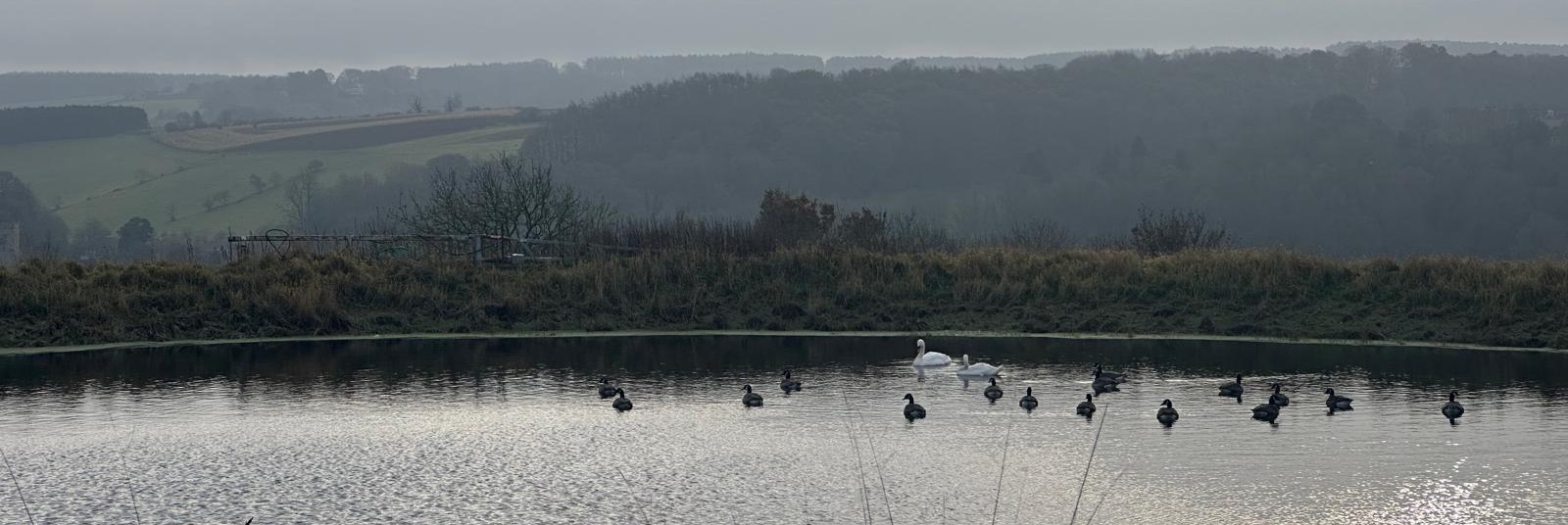Nature Restoration Projects Are Heading For Legacy Status.
Supported by and part-funded by Bisca – a range of local nature restoration and conservation initiatives have recently been recognised as potential legacy projects in the Ryedale area of North Yorkshire.
The projects’ success to date led to a recent event organised by Ryevitalise and hosted by Lindsay and Sarah McLane at Gilling East – which offered a tour of their farm to local landowners, conservationists and environmental specialists. The event showcased the benefits of the Nature Restoration and Regenerative Agriculture Programme that has been underway at their property since 2021.
To date there have been three projects completed, with some new and exciting opportunities in the planning stages progressing well. This news of the farm’s legacy status comes after its third annual hedgelaying event was held – taking place in February and trebling the number of attendees since it started – this year running over an extended two days. Wide interest has been attracted from all over North Yorkshire including the farming community and those interested in horticulture and nature restoration.

So far, the three projects have taken place over two years including a spiral orchard of mixed fruit trees; two new hedgerows made up of mixed native shrubs and fruit trees; and two further new coppices to border pasture land grazed by a herd of cattle.
The benefits of these new hedgerows and coppices are three-fold; as well as supporting the farms ambition to fully transition towards a regenerative agricultural operation; they will also both restore and conserve the area’s natural landscape; whilst bringing environmental gain including attracting new wildlife species, reducing flood risk and enhancing the local biodiversity.
Founder and Design Director at Bisca, Richard McLane’s genuine passion is poignant and has been the driving force behind the environmental projects supported by his business to date. Richard explains:
“We have made a huge impact from a standing start – a credit to Bisca for their support of nature regeneration; community education; and improving our understanding of the moral obligation we each have to mitigating our carbon operations wherever possible.”
The project began with studying maps from the 1800s of the nearby Gilling valley and identifying original hedgerows on local farmland which have all but disappeared. As part of phase one and two of the programme – over one kilometre of hedgerows has been re-instated to include 180 fruit trees and 4315 mixed native shrubs. Furthermore, 475 mixed native trees have been used to form two new coppices. Mulched bark was also supplied by Bisca to assist with pest control and water retention in the summer months, raising the chances of a healthy hedgerow forming.
With its headquarters located in the heart of two protected areas – the Howardian Hills and the North York Moors National Park – Bisca is an environmentally conscious business and places the responsibility for reducing its carbon footprint and fostering a sustainable future, at the centre of its decisions.
Having grown up in Gilling himself and seen the continued demise of small family farms over the last 40 years, Richard is seeking to paint a positive and uplifting vision for the future of agriculture in the Ryedale area. He is combining this ambition with his environmental and climate aspirations – hoping to showcase how farming and nature working together will encourage the survival of both.
These projects came about following the Government acknowledging the critical importance of new trees and hedgerows being maintained and planted to improve carbon sequestration, in their 25 Year Environment Plan. This plan commits to planting 11 million trees, which involves a total of 7,000 hectares per annum in England by 2025. Trees in woodlands, the wider landscape and hedgerows are also going to play a significant role in helping the NFU deliver its ambition to meet Net Zero by 2040.
As Bisca embarks on supporting the next phases of its programme – which will include the creation of a natural wetlands area, plus further new hedgerows and a vineyard to the south side of the farm – it would have been impossible to get to this stage without access to the expertise and funding available to landowners at this time.

“Having worked with numerous farm conservation and landscape specialists from the Howardian Hills Protected Landscape Programme, we have been fortunate to gain financial backing from the Farming in Protected Landscapes (FiPL) funding scheme. We can’t thank these people enough for their support, which has massively helped bring our ambitions to life.
This investment will benefit future generations in our area and support a thriving natural environment in which we can continue to farm in a sustainable and productive way.”










